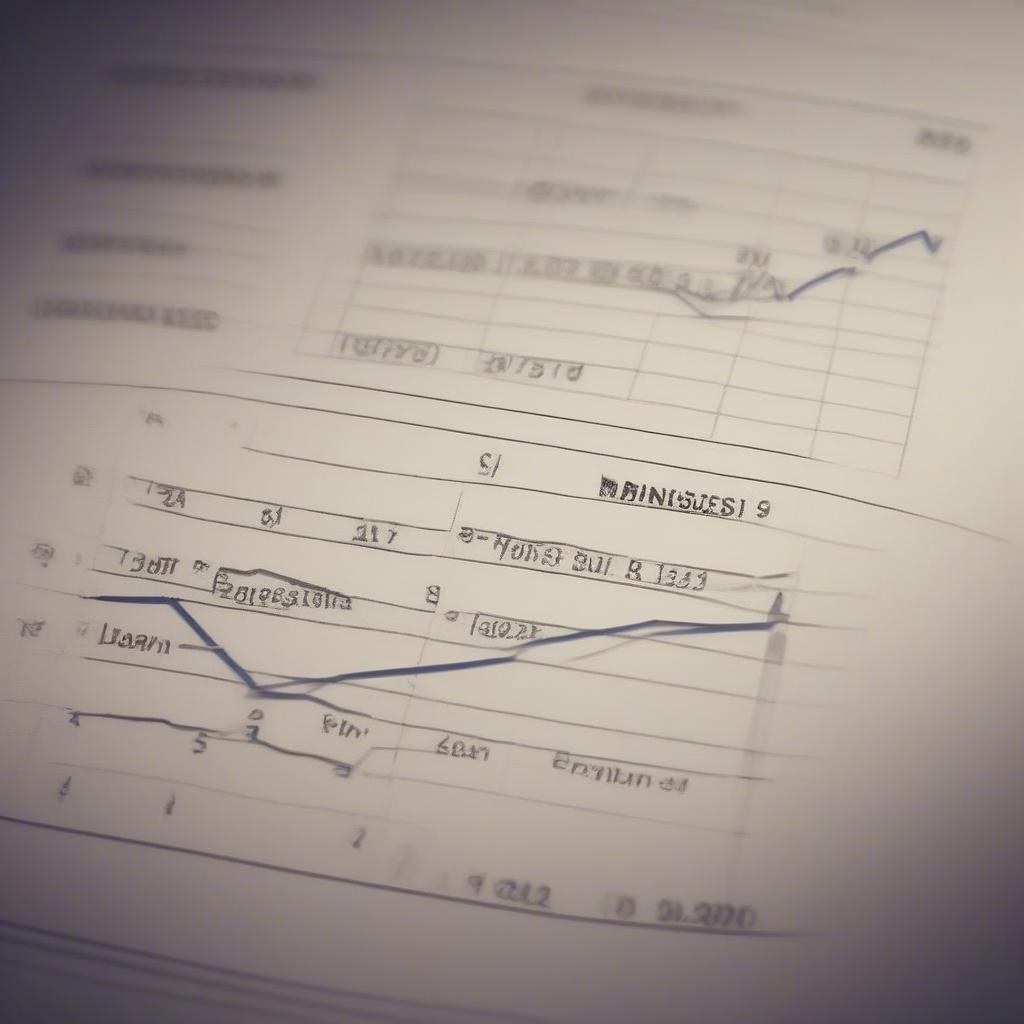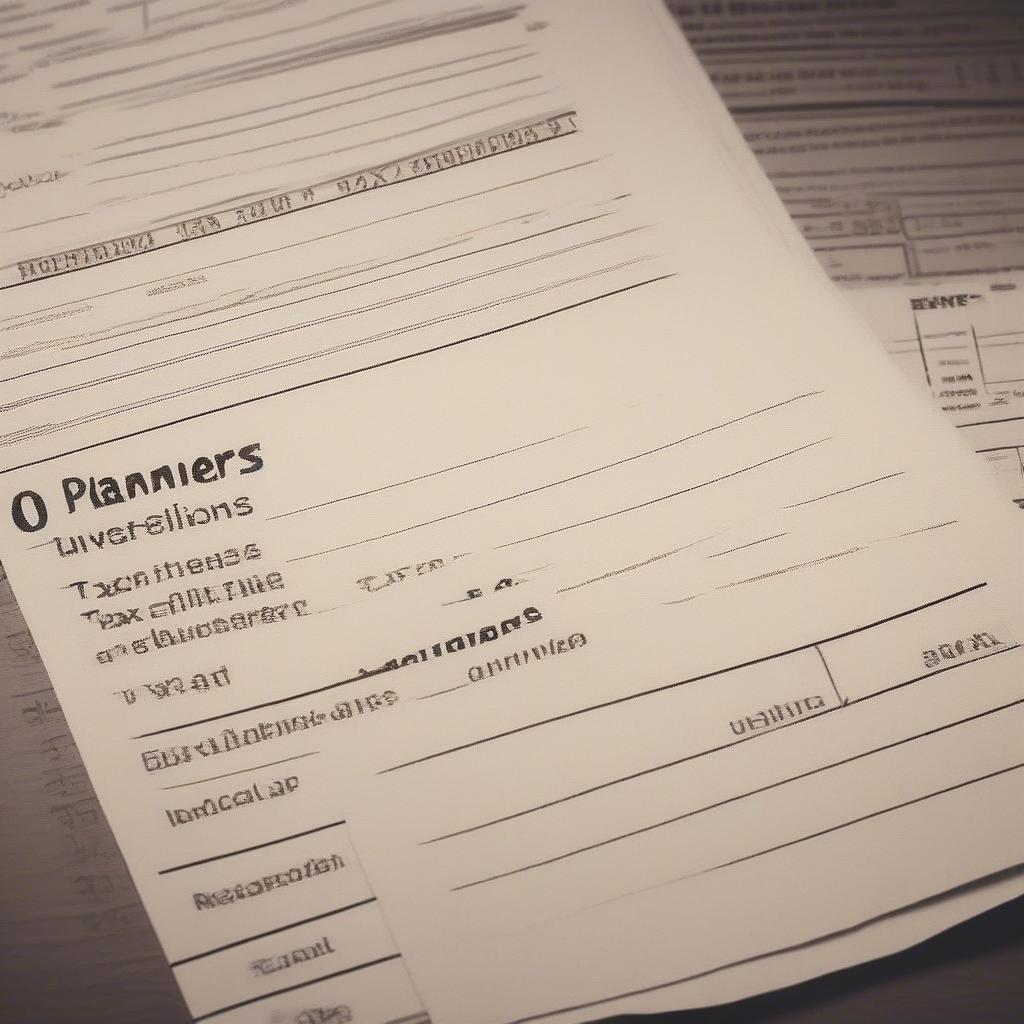
Forecasting profit margins in your event business might seem daunting, like predicting the future while juggling flaming torches. But fear not! It’s actually a crucial skill that, once mastered, will give you the power to navigate the ever-changing landscape of events with confidence and ensure your business thrives. This guide will break down the process, step-by-step, making it accessible even if you’re allergic to spreadsheets.
Why Forecasting Profit Margins Matters: Your Event Planning Crystal Ball
Think of forecasting profit margins as having a crystal ball that allows you to peek into the financial future of your event planning business. Instead of vague visions, you get concrete, actionable insights. Here’s why it’s so important:
- Financial Stability: Knowing your projected profit margins allows you to ensure your business is financially healthy and can weather any storms. It helps you identify potential cash flow problems before they happen.
- Informed Decision-Making: Should you invest in new equipment? Hire an additional team member? Forecasting helps you make informed decisions based on realistic expectations, not wishful thinking.
- Pricing Strategies: Are you charging enough for your services? Forecasting helps you analyze your costs and determine the optimal pricing to maximize profit without scaring away clients.
- Resource Allocation: Where should you allocate your resources—marketing, staff, supplies? A clear understanding of your profit margins helps you prioritize and allocate resources effectively.
- Attracting Investors: If you’re seeking investment, a well-documented profit margin forecast is essential to demonstrate the viability and profitability of your event planning business.
- Setting Realistic Goals: You can set achievable and measurable goals based on a realistic understanding of your potential earnings. No more shooting in the dark!
- Identifying Inefficiencies: Forecasting allows you to identify areas where you can cut costs or improve efficiency, leading to higher profit margins.
Essentially, forecasting profit margins provides you with the data you need to make strategic decisions that drive growth and ensure the long-term success of your event planning business.
Understanding Key Financial Metrics for Event Planning
Before diving into the forecasting process, let’s familiarize ourselves with the key financial metrics that play a crucial role in determining your profit margins.
Revenue: The Foundation of Your Event Business
- Definition: Revenue is the total income generated from your event planning services. This includes fees for planning, coordination, vendor management, and any other services you provide.
- How to Calculate: Sum up all the income from all your events within a specific period (e.g., monthly, quarterly, annually).
- Example: If you planned 5 events in a month, charging $5,000 per event, your total revenue for that month would be $25,000.
Cost of Goods Sold (COGS): The Direct Costs of Creating Events
- Definition: COGS includes all direct costs associated with planning and executing an event. This doesn’t include overhead costs (like rent or salaries).
- Examples: Venue rental, catering, decorations, entertainment, photographer/videographer, materials for DIY projects.
- How to Calculate: Add up all the direct costs for each event.
- Example: For a wedding, your COGS might include $5,000 for the venue, $3,000 for catering, $1,000 for flowers, and $500 for the DJ, totaling $9,500.
Gross Profit: The Core Profitability Metric
- Definition: Gross profit is the difference between your revenue and your COGS. It shows how efficiently you’re managing the direct costs of your event planning.
- How to Calculate: Gross Profit = Revenue – COGS
- Example: If your revenue for an event is $12,000 and your COGS is $9,500, your gross profit is $2,500.
Operating Expenses: Keeping the Lights On
- Definition: Operating expenses are the costs associated with running your event planning business, but not directly tied to a specific event.
- Examples: Rent, utilities, salaries, marketing expenses, insurance, software subscriptions, office supplies.
- How to Calculate: Add up all your operating expenses for a specific period (e.g., monthly, quarterly, annually).
- Example: Your monthly operating expenses might include $1,500 for rent, $500 for utilities, $3,000 for salaries, and $500 for marketing, totaling $5,500.
Net Profit: The Bottom Line
- Definition: Net profit is the profit remaining after deducting all expenses (COGS and operating expenses) from your revenue. This is your true profit.
- How to Calculate: Net Profit = Revenue – COGS – Operating Expenses
- Example: If your revenue is $25,000, COGS is $9,500, and operating expenses are $5,500, your net profit is $10,000.
Profit Margin: The Percentage of Profit
- Definition: Profit margin expresses your profit as a percentage of revenue. It allows you to compare your profitability across different events or time periods.
- Gross Profit Margin: (Gross Profit / Revenue) x 100
- Net Profit Margin: (Net Profit / Revenue) x 100
- Example: Using the previous examples:
- Gross Profit Margin: ($2,500 / $12,000) x 100 = 20.83%
- Net Profit Margin: ($10,000 / $25,000) x 100 = 40%
Understanding these metrics is fundamental to accurately forecasting your profit margins and making informed decisions about your event planning business.
Step-by-Step Guide to Forecasting Profit Margins
Now, let’s dive into the practical steps involved in forecasting your profit margins.
1. Gather Historical Data: Learning from the Past
- Collect Information: Gather financial data from past events, including revenue, COGS, and operating expenses. Aim for at least the past year, or even longer if you have the data available.
- Analyze Trends: Look for patterns in your revenue, expenses, and profit margins. Are there seasonal trends? Have your costs increased over time?
- Identify Outliers: Identify any unusual events that significantly impacted your financial performance (e.g., a particularly large or complex event, a sudden increase in vendor costs). Consider whether these outliers are likely to recur in the future.
- Use Accounting Software: Utilizing accounting software like QuickBooks, Xero, or FreshBooks can greatly simplify this process. These tools automate data collection and reporting.
- Create a Spreadsheet: If you’re not using accounting software, create a spreadsheet to organize your historical data. Include columns for event name, date, revenue, COGS, operating expenses, gross profit, net profit, gross profit margin, and net profit margin.
- Example:
| Event Name | Date | Revenue | COGS | Operating Expenses | Gross Profit | Net Profit | Gross Profit Margin | Net Profit Margin |
|---|---|---|---|---|---|---|---|---|
| Wedding A | 2023-01-15 | $15,000 | $8,000 | $2,000 | $7,000 | $5,000 | 46.67% | 33.33% |
| Corporate Event | 2023-02-28 | $10,000 | $6,000 | $2,000 | $4,000 | $2,000 | 40.00% | 20.00% |
| Birthday Party | 2023-03-10 | $5,000 | $3,000 | $2,000 | $2,000 | $0 | 40.00% | 0.00% |
2. Estimate Future Revenue: Projecting Your Income
- Consider Your Pipeline: How many events are currently booked or in the pipeline? What is the average revenue per event?
- Market Research: Research the demand for event planning services in your area. Are there any new trends or opportunities you can capitalize on?
- Sales Forecast: Create a sales forecast based on your pipeline, market research, and historical data.
- Pricing Strategy: Decide on your pricing strategy for different types of events. Consider factors like competition, demand, and your cost structure. Will you be implementing value based pricing or cost plus pricing?
- Types of Events: Estimate the number and type of events you expect to plan. For example, you might forecast 5 weddings, 10 corporate events, and 20 birthday parties.
- Revenue per Event Type: Assign an estimated revenue value to each type of event. For example, you might estimate $15,000 for a wedding, $10,000 for a corporate event, and $5,000 for a birthday party.
- Total Revenue Calculation: Multiply the number of events by the revenue per event type and sum up the results to get your total estimated revenue.
- Example:
| Event Type | Number of Events | Revenue per Event | Total Revenue |
|---|---|---|---|
| Wedding | 5 | $15,000 | $75,000 |
| Corporate Event | 10 | $10,000 | $100,000 |
| Birthday Party | 20 | $5,000 | $100,000 |
| Total | $275,000 |
3. Forecast Cost of Goods Sold (COGS): Predicting Direct Expenses
- Vendor Quotes: Obtain quotes from vendors for key event components (e.g., venue rental, catering, decorations).
- Historical Data: Use historical data to estimate the COGS for different types of events.
- Contingency Planning: Add a contingency buffer to your COGS forecast to account for unexpected expenses. A 5-10% buffer is generally recommended.
- Event-Specific Costs: Estimate the COGS for each event based on its specific requirements. Consider factors like the number of guests, the venue, and the type of entertainment.
- Cost per Event Type: Assign an estimated COGS value to each type of event. For example, you might estimate $8,000 for a wedding, $6,000 for a corporate event, and $3,000 for a birthday party.
- Total COGS Calculation: Multiply the number of events by the COGS per event type and sum up the results to get your total estimated COGS.
- Example:
| Event Type | Number of Events | COGS per Event | Total COGS |
|---|---|---|---|
| Wedding | 5 | $8,000 | $40,000 |
| Corporate Event | 10 | $6,000 | $60,000 |
| Birthday Party | 20 | $3,000 | $60,000 |
| Total | $160,000 |
4. Project Operating Expenses: Keeping the Business Running
- Fixed vs. Variable Costs: Distinguish between fixed costs (e.g., rent, salaries) that remain constant regardless of the number of events and variable costs (e.g., marketing, travel) that fluctuate based on business activity.
- Historical Data: Use historical data to estimate your operating expenses.
- Budgeting: Create a budget for each category of operating expenses.
- Realistic Estimates: Be realistic about your expenses. Don’t underestimate the cost of marketing, software, or other essential business functions.
- Regular Review: Regularly review your operating expenses to identify areas where you can cut costs or improve efficiency.
- Example:
| Operating Expense | Monthly Cost | Annual Cost |
|---|---|---|
| Rent | $1,500 | $18,000 |
| Utilities | $500 | $6,000 |
| Salaries | $3,000 | $36,000 |
| Marketing | $500 | $6,000 |
| Insurance | $200 | $2,400 |
| Software | $100 | $1,200 |
| Total | $5,800 | $69,600 |
5. Calculate Profit Margins: The Final Calculation
-
Gross Profit: Calculate your gross profit by subtracting your total COGS from your total revenue.
-
Net Profit: Calculate your net profit by subtracting your total operating expenses from your gross profit.
-
Gross Profit Margin: Calculate your gross profit margin by dividing your gross profit by your total revenue and multiplying by 100.
-
Net Profit Margin: Calculate your net profit margin by dividing your net profit by your total revenue and multiplying by 100.
-
Analyze Results: Analyze your projected profit margins. Are they in line with your goals and industry benchmarks? If not, identify areas where you can improve.
-
Example:
-
Total Revenue: $275,000
-
Total COGS: $160,000
-
Total Operating Expenses: $69,600
- Gross Profit: $275,000 – $160,000 = $115,000
- Net Profit: $115,000 – $69,600 = $45,400
- Gross Profit Margin: ($115,000 / $275,000) x 100 = 41.82%
- Net Profit Margin: ($45,400 / $275,000) x 100 = 16.51%
6. Scenario Planning: Preparing for the Unexpected
- Best-Case Scenario: Project your profit margins assuming everything goes according to plan and you exceed your revenue targets.
- Worst-Case Scenario: Project your profit margins assuming you fall short of your revenue targets and experience unexpected expenses.
- Most-Likely Scenario: This is your base forecast, which assumes a realistic set of assumptions.
- Impact Analysis: Analyze the impact of each scenario on your cash flow, profitability, and overall financial health.
- Contingency Plans: Develop contingency plans to mitigate the risks associated with the worst-case scenario. This might include cutting expenses, renegotiating vendor contracts, or seeking additional funding.
7. Regularly Monitor and Adjust Your Forecast: Staying on Track
- Track Actual Results: Regularly compare your actual financial results to your forecast.
- Identify Variances: Identify any significant variances between your forecast and your actual results.
- Analyze Causes: Analyze the causes of these variances. Were your revenue estimates too optimistic? Did you underestimate your expenses?
- Adjust Forecast: Adjust your forecast based on your actual results and any new information you have.
- Continuous Improvement: Continuously improve your forecasting process by learning from your past mistakes and refining your assumptions.
- Frequency: Monitor and adjust your forecast at least monthly, or even more frequently if your business is experiencing rapid growth or significant changes.
Tools and Templates to Streamline the Process
- Spreadsheet Software (Excel, Google Sheets): Essential for organizing data, creating forecasts, and performing calculations.
- Accounting Software (QuickBooks, Xero, FreshBooks): Automates data collection, reporting, and financial management.
- Project Management Software (Asana, Trello): Helps you track event-related costs and manage budgets.
- Financial Modeling Templates: Pre-built templates that simplify the forecasting process. Look for templates specifically designed for event planning businesses.
- Profit Margin Calculator: Use online calculators to quickly calculate your profit margins.
Tips for Accurate and Effective Forecasting
- Be Realistic: Avoid overly optimistic assumptions. Base your forecasts on historical data and market research.
- Be Detailed: Break down your revenue and expenses into as much detail as possible.
- Involve Your Team: Get input from your team members, especially those who are involved in sales, marketing, and operations.
- Stay Informed: Stay up-to-date on industry trends, economic conditions, and other factors that could impact your business.
- Regularly Review Your Forecast: Don’t just create a forecast and forget about it. Regularly review and update your forecast to ensure it remains accurate.
- Don’t Be Afraid to Revise: The business landscape changes quickly. Don’t be afraid to revise your forecast as new information becomes available.
Learn Business: Your Partner in Financial Success
At Learn Business, we understand the unique challenges faced by event planning businesses. That’s why we offer a range of resources to help you achieve financial success, including:
- Business Plan Templates: Professionally designed templates that help you create a comprehensive business plan, including detailed financial projections.
- Financial Forecasting Templates: Easy-to-use templates specifically designed for forecasting profit margins in the event planning industry.
- Business Coaching: Personalized coaching to help you develop your financial skills and make informed decisions.
- Online Courses: In-depth courses on financial management, accounting, and forecasting.
- Expert Advice: Access to a network of experienced business professionals who can provide guidance and support.
We are committed to helping you build a thriving and profitable event planning business.
Conclusion: Taking Control of Your Financial Future
Forecasting profit margins in your event business is not just a financial exercise; it’s a strategic tool that empowers you to take control of your financial future. By understanding your key financial metrics, following a systematic forecasting process, and utilizing the right tools and resources, you can make informed decisions, maximize your profitability, and build a sustainable business. Don’t let financial uncertainty hold you back. Start forecasting your profit margins today and unlock the full potential of your event planning business!



Leave a Reply